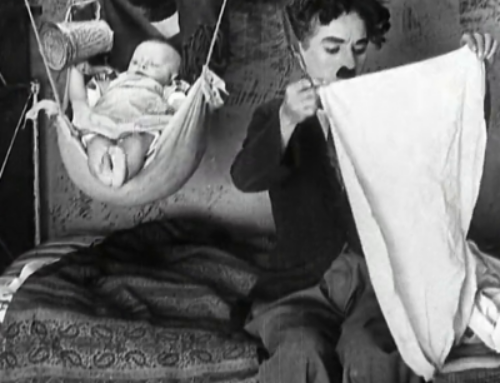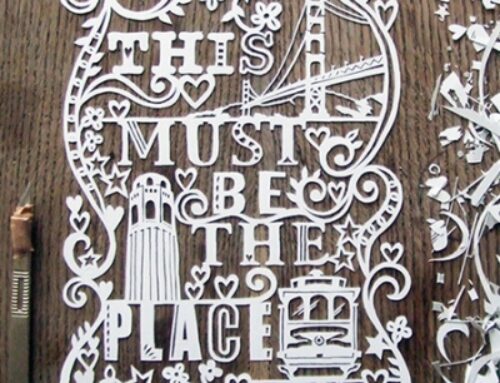Many recent events are more understandable if we recognise the sense of the landscape they evoke: a code that everyone can understand and that is rooted in a deep and disturbing past.
The dog being taken for a walk in the evening and Trump opening the US embassy in Jerusalem use the same communicative code. In fact, the media environment common to these behaviours is always the same: the landscape, i.e. the meaning assigned to signs on the ground. A transcultural code is used, or rather it is a system of signs that is found in every culture and that, used in this way, leads back to the archetypal meaning of the flag: to signal possession of the territory.
The signs of territorial dominance are like cries outside the lines in a representation of identity. Today, they are a grotesque caricature of ancient and obsolete behaviour, resorting to an archetypal language that everyone understands: the border (Romulus and Remus), the soaring symbols (the flagpole on the highest tower), the ritually shed blood (the beheading of the king).
Dormant ghosts are reawakened in modernity, which did not feel the lack of an underlining of identity contours: these cries come to tell us that we moderns are bewildered at home because we have too few fences, too many languages and bloodshed, too many uniformed customs, too many non-places.
As in persuasive arguments, there is no need to raise our voices, we have always felt that a healthy society is also identitarian without walls, racism and the worship of traditions.
When we shout, when we do belligerent dances to define boundary lines and independence of behaviour, it means that we are uncomfortable, that we do not feel in control of the situation. Up until a year ago I would have written: look at Barcelona… a city of the world, living and maintaining its cultural diversity immersed in a salvific network of international relations, which allow it to give a shit about relations with Madrid. Today, stunned, I look at the sad outcomes of a cold fight, in which high cries were raised, and where the signs of possession of the territory from a dance of toreadors (the demonstrations that alternately fill the squares, the schools where the militia that enter to prevent voting can no longer get out because of the crowds at the gates) have turned into pochade (the flight in a car of the leaders, shamefully reminiscent of that of our king on 9 September 1943): geographical signs that have buried any dignity of the separatist political enterprise in the collective imagination.
That of signs is a complex art, which must be taken into account, as always in communication, not only of the one who emits, but also of the one who receives and above all of the medium in which it is transmitted, as McLuhan teaches.
And in many cases of cross-cultural communication, the medium is the landscape: it makes itself understood by everyone.
The terrorists of these years know this well, who kill people at random but carefully choose the theatre of the sacrificial rite: places of celebration, of religion, symbolic architecture. It is the opposite of the terrorism of the years of lead, which aimed ad personam but was indifferent to the context. The message is different: back then, alleged individual guilt was intended to be marked, a cryptic signal for the few followers of a sect, now it symbolises the exercise of a tyrannical command, which imposes itself on everyone, without a face and which does not look in the face.
In this cold logic, which acts surgically on primary emotions, death in a place of celebration has more effect than in a place of work: perhaps irrationally, the dead appear more innocent, perhaps it insinuates disquiet where we would like to remove all thought, perhaps it aims to generate a rage of impotence, the more disproportionate the more it is moved from a peaceful and relaxed context.
It is incredible how many elements of the sense of landscape are present in the apparently uncoded communication of the great contemporary ghosts: not only terror, but migration… poverty.
Milioni di africani soffrono e muoiono nella loro terra; fuggono e spesso cadono in inferni peggiori di quelli che cercano di lasciare, ma si sa… hic sunt leones. Una piccola parte di queste moltitudini insegue il miraggio di luoghi pacifici e ricchi, e, tra mille rischi, arriva alla spiaggia del continente patrio e lì viene ripresa e massacrata, ma si sa… hic sunt leones. Una piccola parte di chi agonizza sulla spiaggia riesce a salire su una barca e lì, in vista dalla costa, incrocia gente predisposta a salvarlo, curarlo, ristorarlo e mantenerlo per un paio d’anni, anche se spesso di malavoglia. Certo, vorrei ben vedere…. è un dovere morale: vuoi mica abbandonare vite umane nel mare nostrum…
E’ la geografia a segnare quando scatta la pietas, è il nostro senso del paesaggio che legittima la mostruosa ipocrisia.
Dovremmo rispolverare il senso del paesaggio che ci ha lasciato la civiltà contadina da cui tutti veniamo. Lì troveremo tutti i segni che ci fanno risalire a galla pulsioni fondamentali dell’abitare che credevamo sepolte nei secoli bui: la mancanza di sicurezza, la paura dell’altro, l’inesorabilità di un futuro che, se va bene, ripeterà il presente.
Basta guardare i versanti terrazzati, i nuclei di case nei boschi di castagni o di faggio, la modestia delle reti viarie: il paesaggio rurale tradizionale è intriso di fatica, di isolamento, di infinito lavorio manutentivo. Ma, proprio per questa storia, è anche deposito patrimoniale, segno del lavoro dei padri che non è negoziabile, che costituisce l’etimo concreto del termine patria.
Quando per tre o quattro generazioni ci si riversa nelle città, dove si è accolti malamente e ributtati ai margini, nelle periferie dove non si riesce a dare forma al proprio abitare, si perde l’identità patria e si rimane culturalmente nudi, senza paesaggio da sentire come proprio. Ormai le nostre periferie sono popolate di orfani di paesaggio, di contatto con il territorio. E chi soffre di una nostalgia struggente del senso concreto dei segni lasciati sul terreno, chi ha dovuto staccare il senso di sè dai luoghi e dalle comunità, ora nutre la propria identità di simboli astratti, di bandiere senza più campanili sotto. Ed è a questa solitudine che si rivolge chi ristabilisce codici d’ordine elementari: confini, vessilli ai centri di comando, pisciate sugli angoli.




